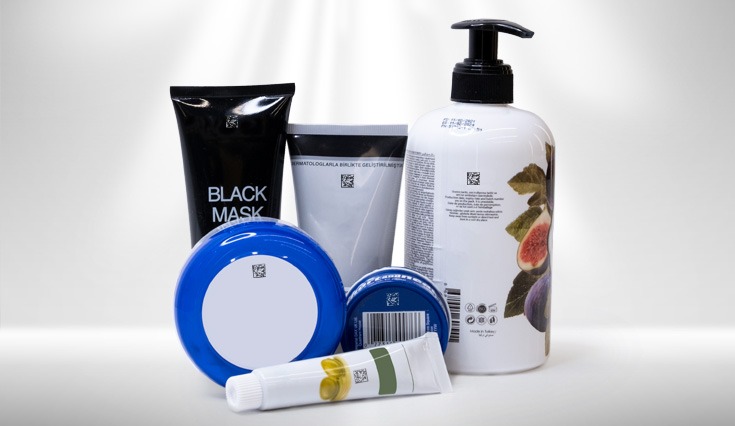
COMPARATIVE APPLICATION TEST
Comparative Application Questionnaire Test: Comparative Evaluation of the Efficacy and User Experience of Cosmetic Products
A Comparative Application Questionnaire Test is a method used to comparatively evaluate the efficacy, performance, and user experience of two or more cosmetic products in the same category on the same group of subjects. This test method is designed to compare newly developed products with existing products on the market, to conduct competitor product analyses, or to provide data for product improvement efforts.
Test Methodology:
The Comparative Application Questionnaire Test is basically conducted similarly to the Application Test methodology, but it is based on the use and evaluation of more than one product by the same subjects within a specific protocol.
Test Phases:
Product Selection and Preparation:
The products to be compared (at least two) are determined. These can be competitor products on the market, a newly formulated product and a reference product, or products with different features (e.g., different active ingredients, different formulations).
30 samples of each product are prepared. If a blind test is to be applied, the samples are coded and randomly distributed to the subjects. It is important that the products are in equal quantities and in the same type of packaging (indistinguishable in the case of a blind test).
Subject Selection and Information:
A group of 30 subjects, generally suitable for the target audience of the products to be tested, is selected.
The skin types, age groups, and other demographic characteristics of the subjects are recorded. Devices such as Corneometer, Sebumeter, and Mexameter can be used for skin type analysis.
The subjects are given detailed information about the test process, the method of use, frequency, duration, and points to be considered, and their written consent is obtained.
Subjects are asked not to use other similar products during the test period.
Product Application and Usage Process:
The subjects use the products alternately for a specified period (usually 35 working days, i.e., approximately 7 weeks) or simultaneously on different parts of the body (e.g., right/left arm).
The frequency, amount, and method of application of the products are determined according to the product type and manufacturer's instructions.
If a blind test is applied, the subjects do not know which product they are using.
If an open test is applied, the subjects know which product they are using.
If a semi-blind test is applied, some of the subjects or the applicator do not know which product is being used.
It would be beneficial to regularly observe the subjects and make interim evaluations during the application period.
Data Collection and Evaluation (Questionnaire):
At the end of the test period, the subjects fill out a detailed questionnaire, sharing their subjective opinions and experiences about each product.
The questionnaire covers topics such as the performance of the products, ease of use, scent, texture, feeling on the skin, absorption, spreadability, and whether the effects claimed by the manufacturer (moisturizing, brightening, wrinkle reduction, etc.) were observed.
In addition, subjects are asked to compare the products and state their preferences.
Objective measurements can also be taken. Parameters such as skin moisture, elasticity, sebum level, melanin level, and wrinkle depth can be measured with devices such as Cutometer, Corneometer, Sebumeter, and Mexameter, and the effects of the products can be compared objectively.
Data Analysis and Reporting:
The data obtained from the questionnaires and objective measurements are analyzed using statistical methods.
The performance, user experience, and preference rates of the products are compared.
The results are presented in a detailed report. The report includes the products used, test methodology, subject information, questionnaire and measurement results, statistical analyses, and interpretations.


Technical Requirements and Considerations:
Sample Size: 30 samples of each product are generally considered sufficient to obtain statistically significant results.
Test Duration: 35 working days (approximately 7 weeks) is generally considered a sufficient period to observe the effects of cosmetic products. However, this period may vary depending on the type of product and the claimed effects.
Controlled Environment: Conducting the tests in a controlled environment (with specific temperature and humidity conditions) is important for the reliability of the results.
Ethical Considerations: The tests must be conducted in accordance with ethical principles, and the rights and safety of the subjects must be protected.
Expert Staff: The tests should be carried out under the supervision of a dermatologist, chemist, or a specialist in the relevant field.
Contact Us for Comparative Application Tests.
We offer affordable and effective solutions tailored to your needs.
The information presented on this website does not constitute legal advice and is intended for informational purposes only. KompassEurope.com.tr assumes no responsibility for any errors or omissions in the information contained on this website. Any decisions made or actions taken by the reader based on this information are solely at the reader's own risk, and KompassEurope.com.tr shall not be held liable for any legal consequences arising from such decisions or actions. Readers are strongly advised to seek professional legal counsel regarding their specific circumstances and concerns.
© 2025 Kompass Europe. All rights reserved. The contents of this website belong to Kompass Europe and are protected by copyright laws. Copying, publishing, distributing or any commercial use of the information on the website is possible only with written permission. By using this site, you agree to our Terms of Use and Privacy Policy.
